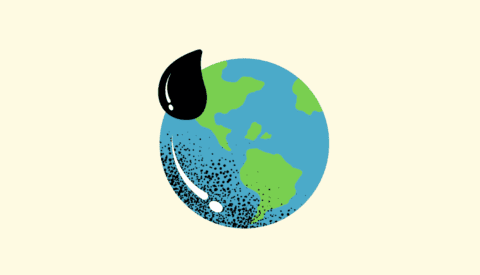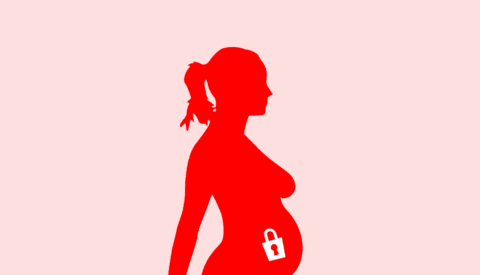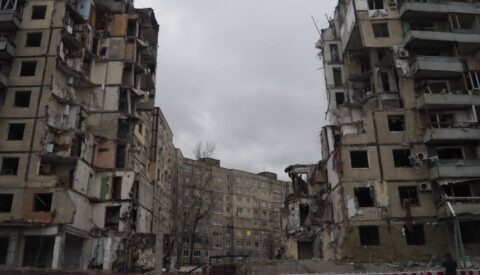«Why Are You Angry?» — A Spanish Look At What Fuels Violence Against Women
The first obstacle to ending gender-based violence is naming it. But too many obstacles remain which keep women suffering in dangerous relationships.
Article

Article
I am always late for my appointments, and this day was no exception. He was waiting at the subway exit. We hadn’t seen each other for 15 days, but I already knew that the reunion would be hostile. There was no «Hello».
We walked to his car in silence. I tried to break it by asking some empty questions, to which the only response I got was a snort of disdain. I knew better. The best thing was to keep quiet and wait for the weather to clear.
But only he could decide that.
We got into the car. He was driving aggressively. My heart was beating, hard and fast.
I managed to gather enough courage to ask him the question when he turned onto the Coruña highway. My voice was not my own when I muttered, «Why are you angry?»
What came next is engraved in my memory like Murnau’s Nosferatu. My brain has wanted to erase the sound, but record the swerve forever, his fists clenched in pure anger, his screams in my face, the saliva splashing on my eyes as wide as they were terrified, his blows on the dashboard until the ventilation ducts exploded. The panic. He kicked me out of the car right there, on the road, just past the Upper Technical School of Agricultural Engineers.
Five minutes. I was five minutes late.
I walked back to the Moncloa station, swearing to myself ‘Never again.’ But it happened again.
Mr. Hyde appeared more often. Dr. Jekyll ended up becoming a vague memory. My conversations were empty for him, and that’s how he liked to let me know, either loudly or with the most absolute indifference. Nothing was good enough for him. Neither me, nor my increasingly remote environment. My four-inch height advantage dissipated, until I became a Lilliputian. Mute. Non-existent.
Crossing the Rubicon
According to data from the VioGén system (an algorithm developed to assess the risk faced by victims of gender violence), 82,363 women and adolescents are under police protection. This means that 82,363 women and adolescents have managed to identify what happens in their own home as abuse, they have managed to break those chains, they have reported it, and a court for violence against women has decided to provide them with protection.
According to data from the VioGén system 82,363 women and adolescents are under police protection
The journey they had to take to have some type of security is similar to that of crossing the Rubicon. Miguela, Carolina, Tatiana Beatriz — of the (to date) 55 women murdered by their partners or ex-partners this year, 14 reported it.
Of them, four even benefited from active protection measures. But they were killed anyway. They had crossed the Rubicon and there was no one on the other side.
Whenever journalists talk about gender-based violence, we run the risk of drowning in a sea of figures. But not telling these numbers would mean keeping quiet about this silent massacre. We owe these women the statistics and, above all, we owe them to throw those figures, cold and overwhelming, in the faces of those who have it in their hands the power to protect them.
Isolated partners
According to a study by the ANAR Foundation (Aid to Children and Adolescents at Risk), almost half of the adolescents who are victims of gender violence are not aware of it.
Ellia, 17, was shot several times by her boyfriend in March. He had carefully and patiently built a homemade weapon to kill her in an open field in Seville.
We have already identified the first obstacle: knowing that what happens to some women has a name, and is called sexist violence. Now, the next one: reporting it. And here, the environment of the victim and the aggressor comes into play. Regarding the first, there is little to say, because abusers are often careful about isolating their partner (never has a pronoun been more possessive).
These women have already taken the hardest steps. It is up to the rest of us to match their bravery
The people who can witness the change, the physical and moral collapse of the victim, those who could alert you about the hell you are going through, are kept further and further outside your circle.
And, as sadistic as they are behind closed doors, the opponent knows how to show the world a good face.
Who can denounce such a person? And what if there is economic dependence, or if kids are involved, or if you don’t even recognize yourself in the mirror? What if sometimes he is just Dr. Jekyll?
But one day, they take the step, and they report. It turns out that, depending on which court is chosen, either there is a safety net or they fall into the void. According to CGPJ (General Council of the Judiciary) data, from 2005 to 2022, just over 67% of the protection orders requested were granted.
Other courts for violence against women almost systematically deny them. The court that rejected that of Tatiana Beatriz, whose ex-partner slit her throat in Carabanchel last November after cutting the throat of her 5-year-old daughter, has only granted 35% of the requests in 17 years.
Failing future victims
The gender violence crisis committee has met seven times to discuss the crisis, and to find out why they continue to kill us indiscriminately for being women. And they don’t know what to say. If they don’t have answers, how can we expect solutions?
The gender violence crisis committee has met seven times to discuss the crisis, and to find out why they continue to kill us indiscriminately for being women
Public speeches overflow with obviousness and, sometimes, soul-breaking words. The response of the freshly appointed Minister of Equality, Ana Redondo, to the failures in the system that lead to the murder of sexist violence victims, even after they reported it, cannot be «for some reasons» or «we have to see».
To say, as she did, that «Women report, but not everything they should» is supremely cruel. It’s the perfect example of victim blaming. And, to top it all off, she purely dismissed institutions’ responsibility when she blurted out that «We cannot defend all the victims all the time».
Shamelessly accepting the idea of abandoning the victim and pulling away from the woman who, at home, is debating whether to go to court or cover her wounds.
Back to the data: the lives of 975 women with protection orders in this country are in danger. At any time, they could be beheaded, suffocated, shot. And another 50,000 may suffer new violence. That’s without counting the silent victims.
Any new blow and any new murder will be another failure for this society. These women have already taken the hardest steps. It is up to the rest of us to match their bravery.
It took me years to be able to come home without the fear of not knowing which version of the monster I would find when I crossed the threshold. It took me years not to normalize constant humiliation and degradation. It took me years to value the silence born of pleasure and tranquility, not from fear.
But it took me even more years to recognize and put a name on what that awful partner did to me for too long. And it hurts me to see this took its toll in my life, leaving marks that will never completely fade. He moved on and is surrounded by people who think he’s a great guy.
As long as they continue, as we continue, being silent, they win. And if our leaders persevere in erasing realities, covering them up and throwing in the towel accepting their inabilities, they will continue to kill us.
Not one more.
This content is part of a collaboration agreement of ‘WorldCrunch’, with the magazine ‘Ethic’. Read the original at this link.






